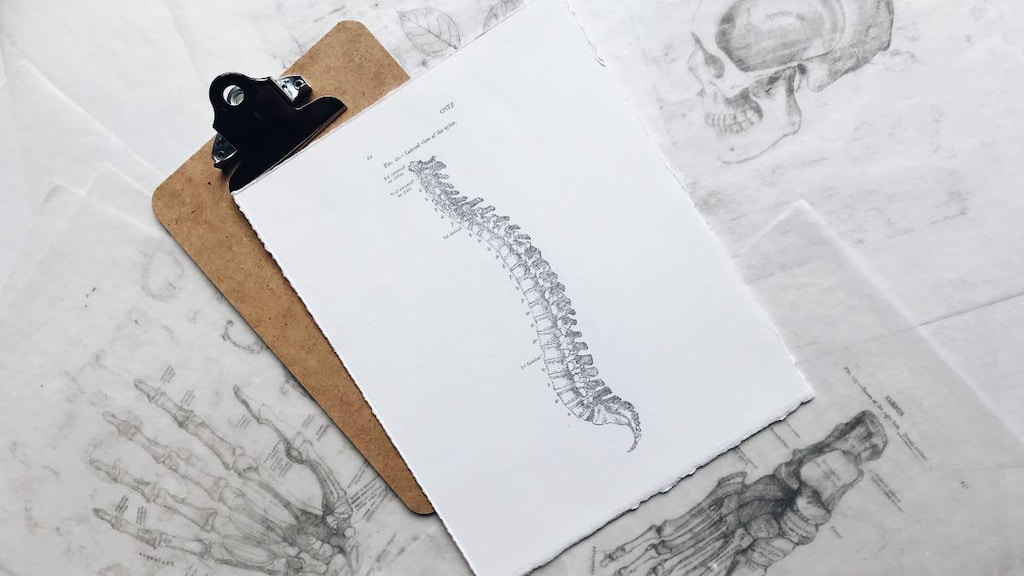Early psoriatic arthritis: What are the first signs?

Psoriatic arthritis is a condition that presents differently in different people, so much so that this form of chronic inflammatory arthritis is categorized into five types and has six key domains. The speed at which people develop symptoms and the severity of these can also vary greatly. Some people slowly develop mild symptoms over time, while others have more severe symptoms that develop quickly.
There is currently no diagnostic test for psoriatic arthritis, so rheumatologists and dermatologists rely on screening questionnaires, skin and joint examinations, x-ray findings and other tests to identify people with this disease.
Early symptom recognition and treatment is thought to be associated with better long-term outcomes in people with psoriatic arthritis, which is progressive and destructive. Even a 6-12 month delay in diagnosis can have an impact on the functional disability and joint damage that people experience.
It is estimated that almost 50 percent of cases of psoriatic arthritis go unrecognized and that significant delays occur during the diagnosis process, which highlights the importance of healthcare providers and their patients becoming more aware of the early signs of the disease.
Who is most at risk of psoriatic arthritis?
Risk factors for psoriatic arthritis include:
- Psoriasis.
- About 30 percent of people with this skin condition will go on to develop psoriatic arthritis and those with the following psoriasis symptoms are thought to be most at risk:
- Scalp lesions
- Lesions around the anus (perianal) and between the buttocks (intergluteal)
- Changes in the texture and composition of their nails (nail dystrophy)
- Usually psoriatic arthritis will appear within five to 12 years of developing psoriasis.
- Approximately 15 percent of people who develop psoriatic arthritis will not have been diagnosed with psoriasis, but they do tend to have a family member who has been diagnosed with the skin condition.
- About 30 percent of people with this skin condition will go on to develop psoriatic arthritis and those with the following psoriasis symptoms are thought to be most at risk:
- Being aged between 30 and 50 years old. Although anyone can develop psoriatic arthritis, even children, psoriatic arthritis is usually diagnosed between the ages of 30 and 50 in both men and women.
- Family history of psoriatic arthritis
Early signs and symptoms of psoriatic arthritis
Psoriatic arthritis is a form of inflammatory arthritis, so symptoms of new and ongoing inflammation and pain could signal the start of psoriatic arthritis.
What to watch out for:
- Redness
- Sensation of heat
- Swelling
- Pain
- Loss of function
Dermatologists involved in the care of people with psoriasis have also put together a list of four key signs and symptoms to watch for to help identify psoriasis patients that may have developed psoriatic arthritis. The four signs they have identified include:
1. Peripheral inflammatory arthritis, which includes signs of inflammatory arthritis in hands, fingers, wrists, shoulders, knees and feet.
What to watch out for:
- Waking at night due to joint pain
- Feeling stiff in the morning or after long periods of inactivity
- Swollen or tender joints
- Reduced range of motion making it harder to move joints
2. Axial inflammatory arthritis, which includes inflammatory arthritis in the neck (cervical area) back and lower back (dorso-lumbar area).
What to watch out for:
- Waking at night due to joint pain
- Feeling stiff in the morning or after long periods of inactivity
- Lower back pain
- Reduced range of motion making to harder to move joints
3. Dactylitis or inflammation that affects the fingers and toes giving them a sausage-like appearance.
What to watch out for:
- Having one painful or swollen finger or toe that has a sausage-like appearance
4. Inflammatory buttock pain or sciatic pain.
What to watch out for:
- Pain in your buttock
- Sciatic pain (pain radiating down the sciatic nerve that runs from the lower back and down the legs)
In addition to the symptoms mentioned above, some people may experience other early signs of psoriatic arthritis.
What to watch out for:
- Tendinitis or inflammation or irritation of a tendon, which is the connective tissue that joins muscles to bone
- Enthesitis, which is inflammation at the point where a tendon or ligament attaches to the bone. When this develops in your Achilles tendon it can lead to pain, swelling and tenderness in your heel, foot and ankle area. Elbow pain can also occur if it affects the connective tissue in that area.
- Fatigue or feeling wiped out
- Uveitis, an inflammatory eye condition that causes red, painful eyes, and blurred vision.
Early symptoms of psoriatic arthritis affect time to diagnosis
The early signs and symptoms of psoriatic arthritis that a person has can influence the time it takes from seeking medical attention to receiving a diagnosis, according to the results of a patient survey.
A shorter time to diagnosis was reported by psoriatic arthritis patients with early symptoms that included:
- Joint pain
- Swollen joints
- Sausage like fingers or toes
While a longer time to diagnosis was reported by psoriatic arthritis patients presenting with:
- Stiffness
- Fatigue
- Enthesitis, including foot problems, tendon and ligament pain
- Back pain
Musculoskeletal problems cause many people to seek treatment in the 5 years before they receive a psoriatic arthritis diagnosis
Canadian researchers have identified non-specific musculoskeletal symptoms as being common during the pre-diagnosis or prodromal phase of psoriatic arthritis.
While many people will seek treatment for such issues, the researchers found that more than one-third of the psoriatic arthritis patients they studied had visited their healthcare provider for issues such as joint pain and stiffness in the five years before they were diagnosed. In addition, these patients were also more likely to have visited a specialist for their musculoskeletal issues, received injections in affected joints, had joints imaging and visited the emergency room.
Developing a diagnostic test for psoriatic arthritis
Diagnosing psoriatic arthritis is challenging without the aid of a diagnostic test and because symptoms can vary. The National Psoriasis Foundation (NPF) is working to make it easier to diagnose psoriatic arthritis and is providing funding to aid the development of a diagnostic test. In the meantime, knowing and recognizing the symptoms of psoriatic arthritis and getting an early diagnosis can help prevent joint damage and disability.
Article references
- National Psoriasis Foundation. About Psoriatic Arthritis. Available at: https://www.psoriasis.org/about-psoriatic-arthritis/. [Accessed September 1, 2020].
- National Psoriasis Foundation. What Your Nails Can Tell Your Doctor About PsA. March 31, 2020. Available at: https://www.psoriasis.org/advance/what-your-nails-can-tell-your-doctor-about-psa/. [Accessed September 1, 2020].
- Wilson FC, Icen M, Crowson CS, McEvoy MT, Gabriel SE, Kremers HM. Incidence and clinical predictors of psoriatic arthritis in patients with psoriasis: a population-based study [published correction appears in Arthritis Rheum. 2010 Apr;62(4):574]. Arthritis Rheum. 2009;61(2):233-239. doi:10.1002/art.24172.
- Coates LC, Helliwell PS. Psoriatic arthritis: state of the art review. Clin Med (Lond). 2017;17(1):65-70. doi:10.7861/clinmedicine.17-1-65.
- AJMC. Psoriasis and Psoriatic Arthritis Overview. June 17, 2016. Available at: https://www.ajmc.com/view/psoriasis-and-psoriatic-arthritis-overview. [Accessed September 1, 2020].
- Villani AP, Rouzaud M, Sevrain M, et al. Symptoms dermatologists should look for in daily practice to improve detection of psoriatic arthritis in psoriasis patients: an expert group consensus. J Eur Acad Dermatol Venereol. 2014;28 Suppl 5:27-32. doi:10.1111/jdv.12563.
- DermNet NZ. Psoriatic arthritis. June 2019. Available at: https://dermnetnz.org/topics/psoriatic-arthritis/. [Accessed September 1, 2020].
- National Psoriasis Foundation. Nuances of Fatigue in Psoriatic Arthritis. May 5, 2020. Available at: https://www.psoriasis.org/watch-and-listen/nuances-of-fatigue-in-psoriatic-arthritis/. [Accessed September 1, 2020].
- Punchard NA, Whelan CJ, Adcock I. The Journal of Inflammation. J Inflamm (Lond). 2004;1(1):1. Published 2004 Sep 27. doi:10.1186/1476-9255-1-1.
- Eder L, Tu K, Rosen CF, et al. Health Care Utilization for Musculoskeletal Issues During the Pre-diagnosis Period in Psoriatic Arthritis - A Population-Based Study [published online ahead of print, 2020 Jan 21]. Arthritis Care Res (Hoboken). 2020;10.1002/acr.24146. doi:10.1002/acr.24146.
- Fraga NA, Oliveira Mde F, Follador I, Rocha Bde O, Rêgo VR. Psoriasis and uveitis: a literature review. An Bras Dermatol. 2012;87(6):877-883. doi:10.1590/s0365-05962012000600009.
- Arthritis Foundation. Enthesitis and PsA. Available at: https://www.arthritis.org/health-wellness/about-arthritis/related-conditions/physical-effects/enthesitis-and-psa. [Accessed September 1, 2020].
- Ogdie A, Nowell WB, Applegate E, et al. Patient perspectives on the pathway to psoriatic arthritis diagnosis: results from a web-based survey of patients in the United States. BMC Rheumatol. 2020;4:2. Published 2020 Jan 10. doi:10.1186/s41927-019-0102-7.
- National Psoriasis Foundation. Psoriatic Arthritis Diagnostic Test Grant. Available at: https://www.psoriasis.org/psoriatic-arthritis-diagnostic-test-grant/. [Accessed September 1, 2020].



